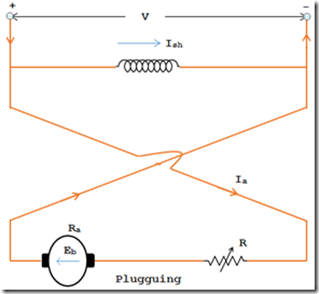
In the area of motor control and energy efficiency, the concepts of plugging and regenerative braking have proven to be revolutionary innovations that improve the performance of DC motors. These innovative techniques not only improve the overall efficiency of engines, but also pave the way for significant energy savings and reduced environmental impact. DC motors can recover previously lost energy through the use of plugging and regenerative braking, achieving new levels of sustainability and energy management.
Understanding DC Motors
Before we get into plug-in and regenerative braking, let's quickly understand how DC motors work. A DC motor (DC motor) converts electrical energy into mechanical energy. It consists of two main components: the stator (the stationary part) and the rotor (the rotating part). When a DC voltage is applied to the motor terminals, it creates a magnetic field in the stator that interacts with the magnetic field in the rotor. This interaction creates rotational motion, which is why DC motors are widely used in various applications.
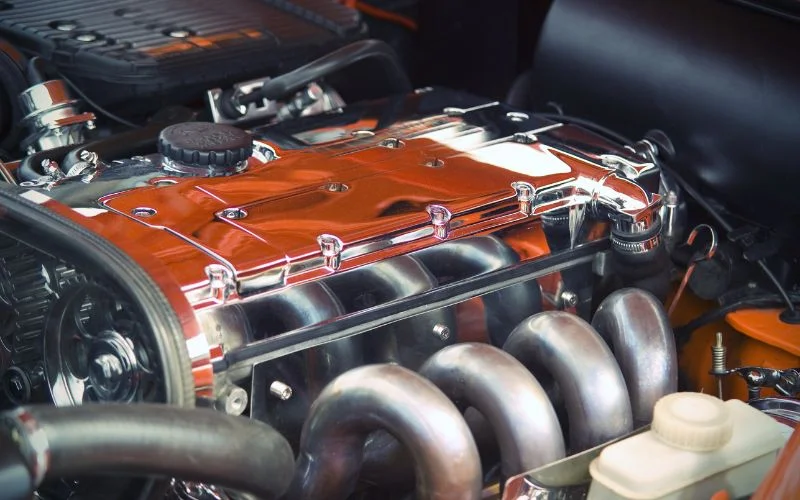
Plug in
The following figure shows how to connect a DC shunt motor. In this technique, the motor tends to rotate in opposite directions, reversing the armature connection, which provides the essential braking effect. When the motor returns to the starting position, the power connection must be disconnected, otherwise it will rotate continuously in the opposite direction.
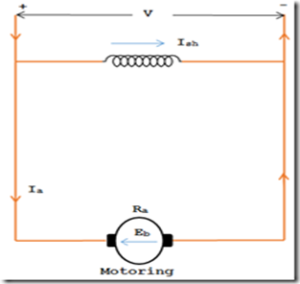
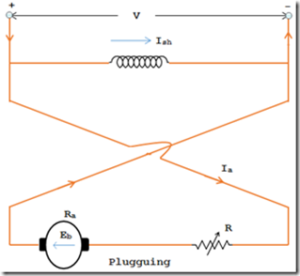
Although the armature connections are reversed, the connections in the field windings remain the same. Therefore, the armature current reverses. Back EMF opposes the voltage applied when the engine is running normally. If the armature connection is reversed, the back emf and voltage used act in a similar direction throughout the circuit. Thus, a voltage equal to V+Eb is applied to the armature circuit. Since Eb is equal to the source voltage, the voltage applied across the armature is 2 V. By changing the armature connections, an adjustable resistor R is inserted into the circuit to limit the current to a safe value.
Now we will see how braking torque depends on engine speed.
From the figure above (connecting)
Armature current I A = (V + E b ) / (R=R A )
In a DC shunt motor, Φ is constant.
Hence the braking torque ∴ TB = K5 + K6N
Therefore, braking torque decreases as engine speed decreases. Even if the engine speed is reduced to zero, a certain braking torque (T b =K 5 )
Benefits of connecting
- Fast braking: The connection allows for fast braking, which is critical for safety in many industrial environments. It can stop an engine in milliseconds, preventing accidents and minimizing damage to equipment.
- Direction Reversal: The connection allows instantaneous reversal of the motor direction, making it ideal for applications where frequent changes in motion are required.
- Power Dissipation: The connection dissipates excess power in the form of heat in the motor windings, which can be beneficial in scenarios where power recovery is not a primary concern.
Regenerative braking
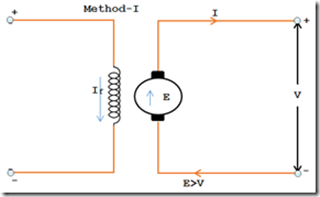
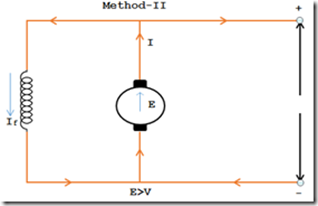
Advantages of braking energy recovery
- Energy recovery: Regenerative braking captures the kinetic energy of the moving engine and converts it back into electrical energy that can be stored in batteries or reused in the system. This contributes to energy efficiency and reduces operating costs.
- Extended lifespan: By dissipating less energy as heat, regenerative braking can extend the lifespan of DC motors, reducing maintenance and replacement costs.
- Ecological harm: The energy-saving feature of regenerative braking reduces the overall environmental impact of energy-intensive applications, making this technology an environmentally friendly choice.
Obstruction and regenerative braking applications
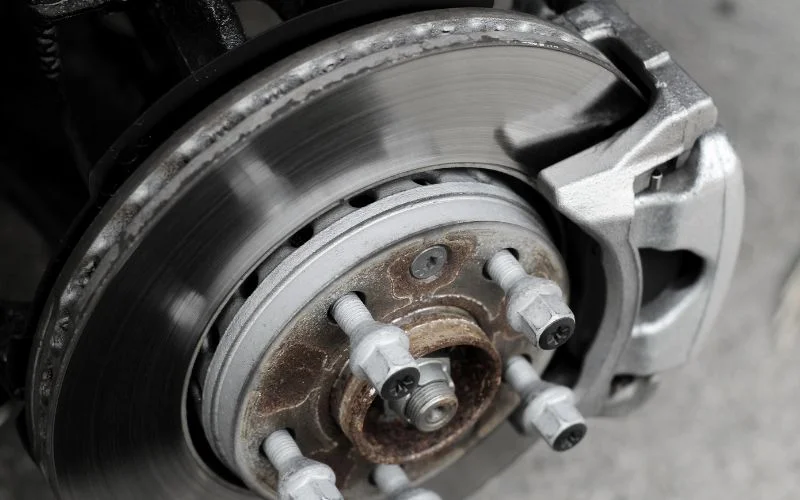
Both slip braking and regenerative braking are used in various industries:
- Automotive industry: Regenerative braking is a fundamental feature of electric and hybrid vehicles, as it reduces fuel consumption and increases range.
- Industrial automation: Plugging is used to precisely control conveyor belts, robotic arms, and CNC machines.
- Elevators and escalators: Clogging ensures smooth, controlled movement in vertical transportation systems.
- Material handling: Both technologies are indispensable for forklifts and cranes and ensure safety and operational control.
Armature reaction in DC motor
In the first method, the field windings are separated from the source and the field current is increased by exciting a separate source. Therefore, the induced electromotive force exceeds the source voltage and the machine supplies energy to the head. Therefore, the braking torque is applied up to the engine speed until the induced electromotive force and the supply voltage are equal. Once the engine speed drops, it is impossible to maintain the induced electromotive force at a value higher than the supply voltage. Therefore, this technology is only used for a limited speed range.
In another technique, the load causes the motor to run above rated speed (i.e., reducing the load on a hoist) rather than changing the field excitation. This makes the induced electromotive force stronger than the source voltage. Therefore, the armature current reverses and the wind in the shunt field remains unchanged. This changes the torque and decreases the motor speed until the induced electromotive force becomes less than the supply voltage.
Conclusion
In summary, plugging and regenerative braking power in DC motors is a remarkable advancement that is revolutionizing energy efficiency and control in a variety of applications. Firing, an armature tension reversal technique, allows for quick stops and changes, improving safety and maneuverability in industrial environments. On the other hand, regenerative braking recovers kinetic energy during deceleration and converts it back into electrical energy, reducing waste and increasing overall efficiency. By leveraging these capabilities, industries can significantly reduce energy consumption and operating costs, contributing to a greener and more sustainable future. Using these technologies opens a new era of intelligent engine control that benefits businesses and the environment.

